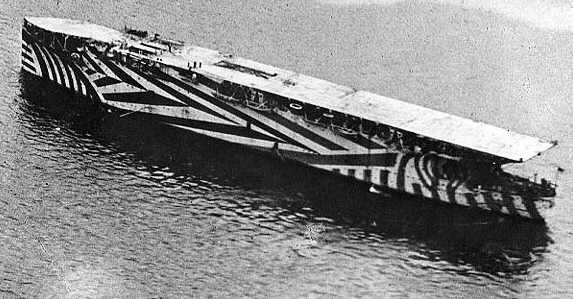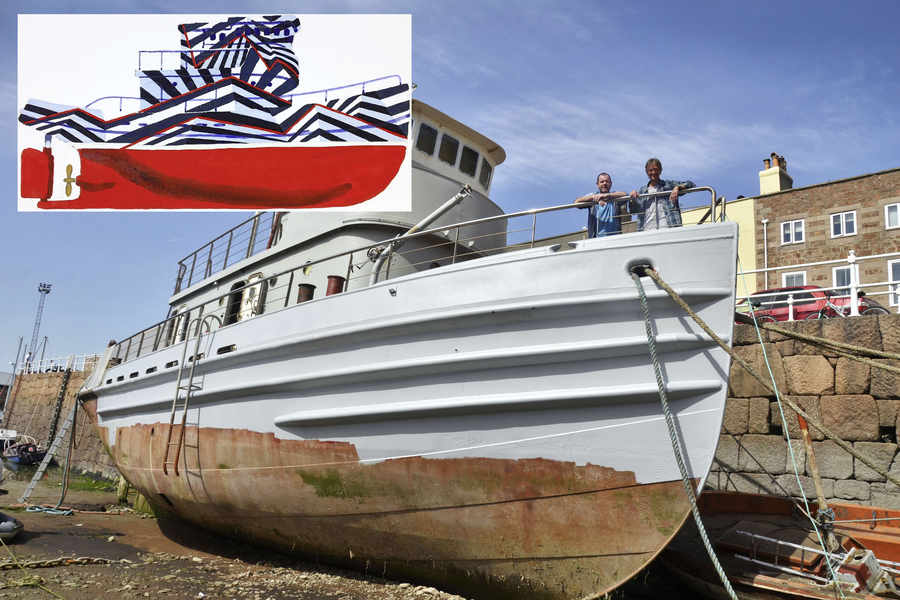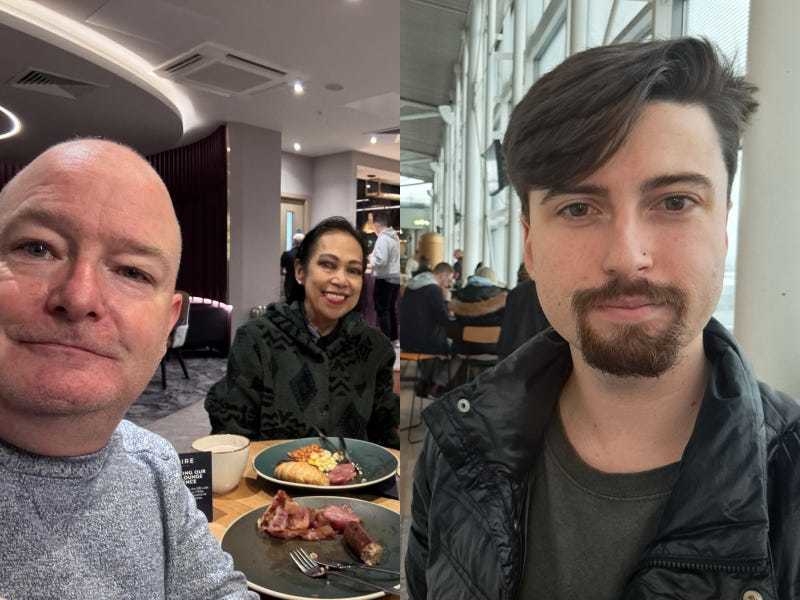- Artists Ian Rolls and and Matt Daly will be transforming an old tugboat as part of an annual art event
- The boat will be painted in ‘dazzle’ camouflage as part of Skipton Art Series
- Method was developed in First World War as way of disguising ships on the water
AN old tugboat that has been berthed in St Helier Harbour for many years is about to get a dazzling maritime makeover as part of this year’s Skipton Art Series of community events.
The Elektra – a former US Army tugboat brought over to Jersey in 1995 – will be transformed during the next few weeks into a work of art by a team of Skipton Art Series artists led by Ian Rolls and Matt Daly.
Mr Rolls created the design, which is based on ‘dazzle’ camouflage, an abstract system of stripes and lines that was used in the First World War and credited to British artist Edward Wadsworth. The optical effect of the design was intended to make it difficult for the enemy to accurately target the ships.
Mr Daly has worked extensively on large-scale paintings, including the Norman’s mural last year, and is bringing his skills, expertise and organisation to the project.
One of the difficult parts of the project will be sketching out the design on the large tugboat.
‘We have various techniques lined up, one with using string and charcoal, which is a traditional method of making lines, or using tape and drawing along the lines. I think it’s going to be one of those projects that we get the feel of it as we go along,’ said Mr Rolls who, with the help of around ten other artists, is expecting the project to take around three weeks to complete. And after the painting is finished, Elektra will keep her dazzle camouflage for at least a year.
Mr Rolls said: ‘I am hugely excited at the prospect of transforming what was a rusting tugboat into a dazzling landmark for Jersey. It is difficult to imagine the full effect the dazzle design will have once completed, but I am expecting it to make a few heads spin.’
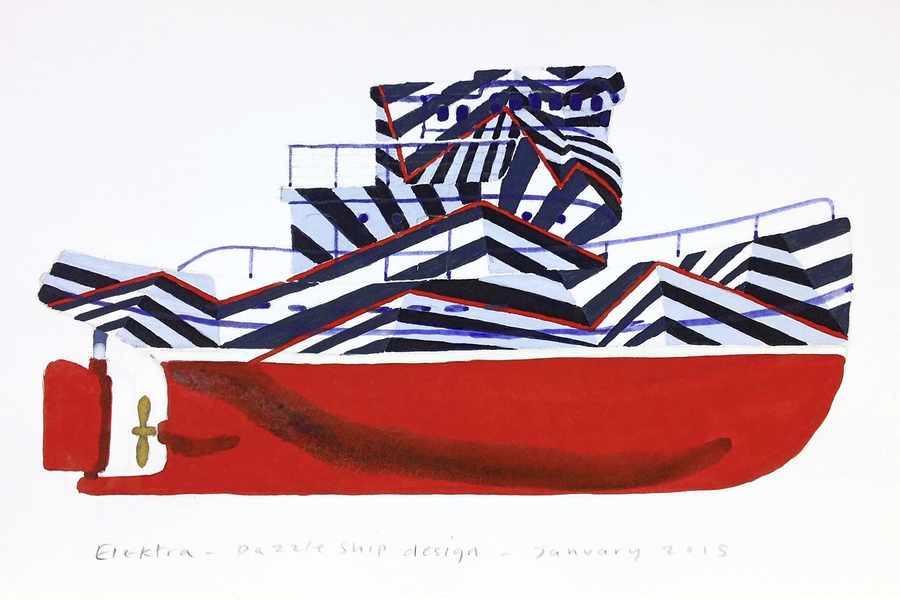
The current owners, Lee and Kaylie Rainbow, were happy to see the proposed transformation of Elektra and Mr Rolls credited Mr Rainbow with carrying out the vast majority of the preparation of the boat for the painting.
The Skipton Art Series has already seen the creation of Les P’tits Faîtchieaux clay figures at La Hougue Bie and a pop-up gallery at Grève de Lecq Barracks, with more events planned throughout the year.
The Dazzle Camouflage Project has been made possible with funding through the States of Jersey’s World War One Centenary Working Group which granted Jersey Arts Trust £10,000 a year, for the next three years, to distribute to arts and community projects that reflect on or commemorate the First World War.
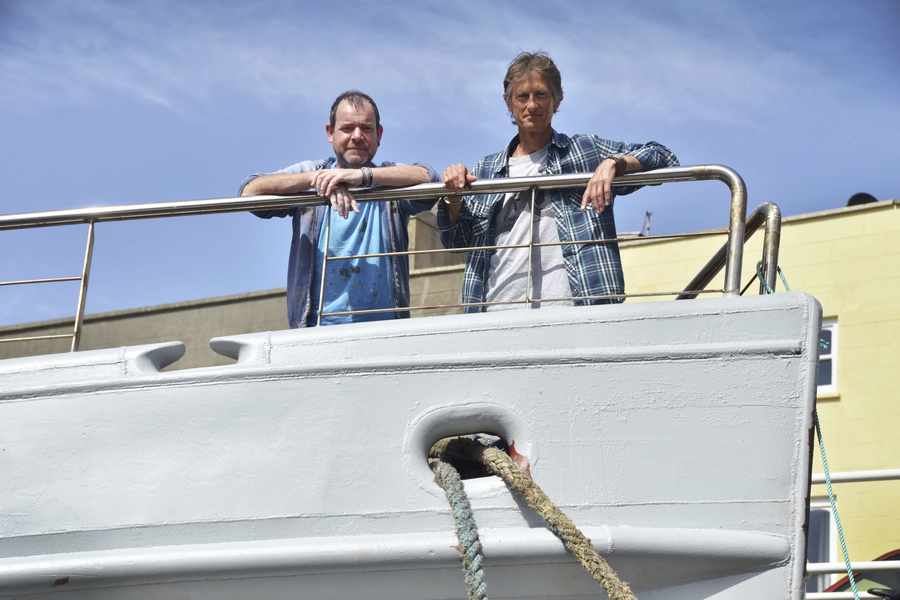

Dazzle camouflage was used extensively in the First World War and is credited to marine painter Norman Wilkinson, who went on to become President of the Royal Institute of Painters in Watercolours.
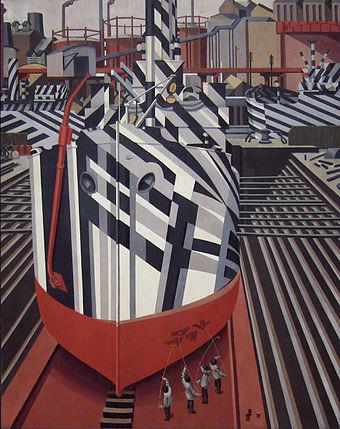
He first suggested the system of stripes and complex geometric shapes which he called ‘dazzle painting.’
The use of dazzle camouflage was extensive during the First World War as a means of making it hard for the enemy to target ships accurately.
The camouflage didn’t aim to hide the ship, but to make the ship’s appearance so optically distorted that it was difficult for a submarine to calculate the target’s course, range, speed and heading.
The effectiveness of the camouflage was not impossible to evaluate and evidence of its success was mixed.
However, it was used by the Royal Navy and the US Navy in the First World War and on a smaller scale in the Second World War.
The bold abstract patterns caught the attention of contemporary artists of the time, such as Picasso who claimed that it was invented by the cubists.
British vorticist artist Edward Wadsworth who supervised dazzle patterning to over 2000 ships painted a series of pictures on the subject after the war.
